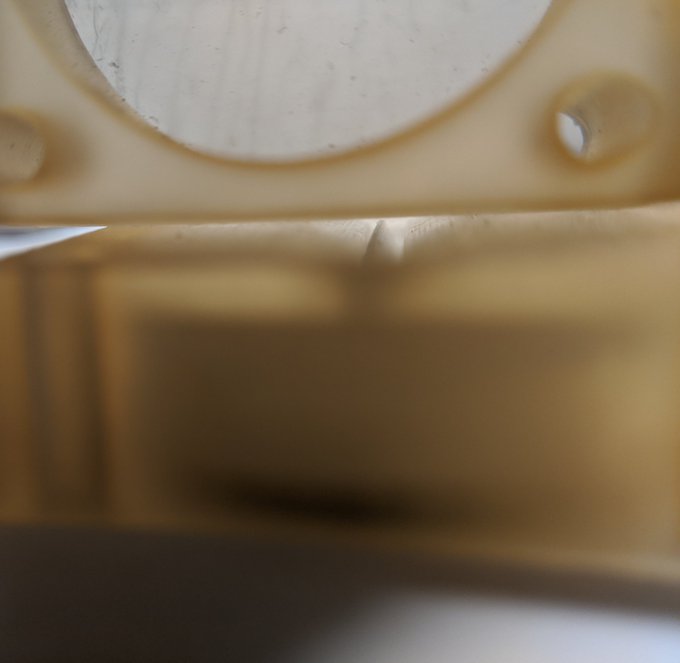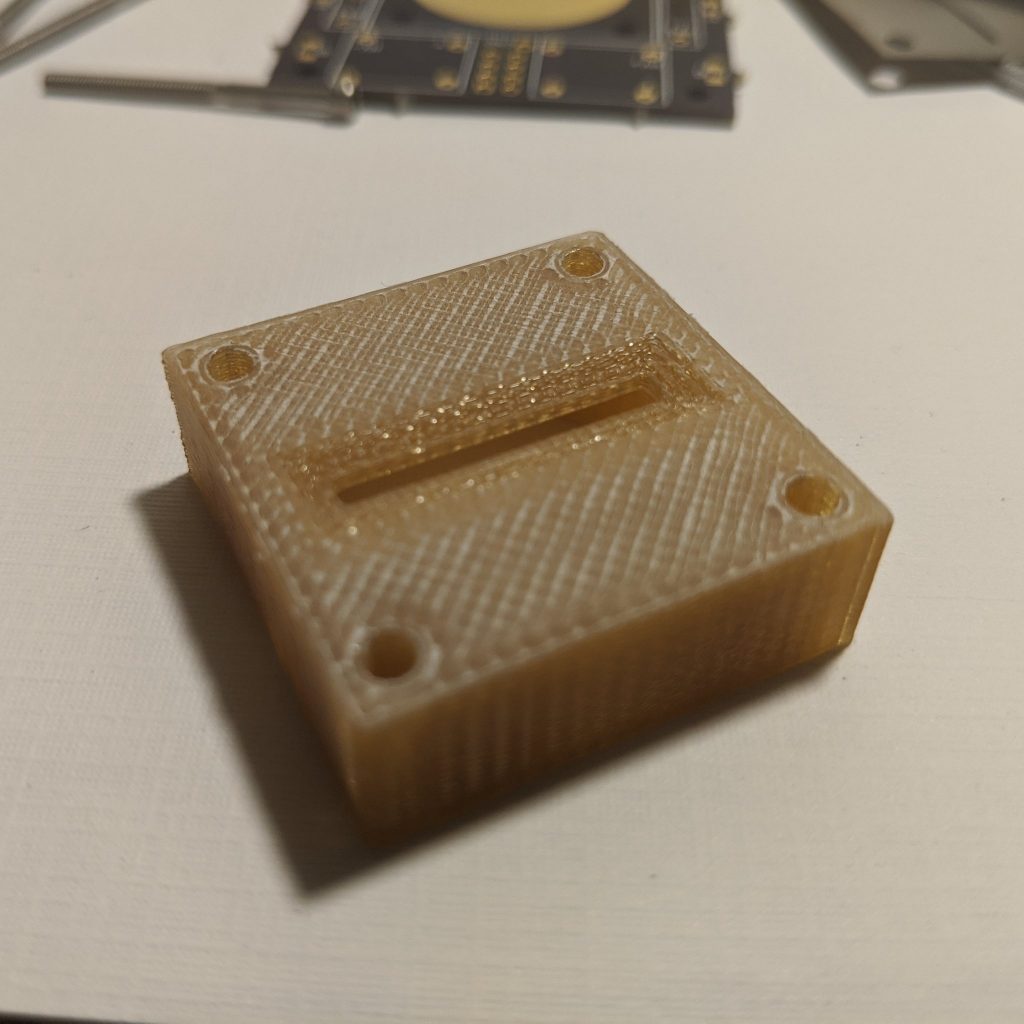While reinspecting the ILIS1 ionic liquid electrospray thruster 3D printed casing in preparation for the next test, I discovered a critical new piece of info. I found that the top of the case, which is supposed to be 2mm, is actually 2.5mm! This means the 2mm high emitter ridge is 0.5mm too low! No wonder it couldn’t turn on at +/-3.5kV!

I inspected both the SLA prints and the FDM prints, both are out of spec and too thick here. With micro ion thrusters at this scale, even a small fraction of a mm tolerance in alignment is a huge difference between proper functionality and failure.
Based on analysis of similar thrusters in literature, turn on should be a bit more than 2kv. With this big a gap, plus the wider extractor and overall thicker emitter, there is no way the field strength would have been high enough to achieve stable turn on even at 3.5kV.
For the final version I will need to get precision machined PEEK cases, no way around it. It will cost hundreds of dollars more but it’s a small price to pay for functionality, especially considering this thruster will already be an order of magnitude cheaper than competitors
I already ground down the top of the Ultem print to spec for the next test, which should suffice for now. Can’t believe I’m working on some of the most advanced micro-ion tech by literally grinding critical 3D printed parts by hand with fine sandpaper on glass on at home…

